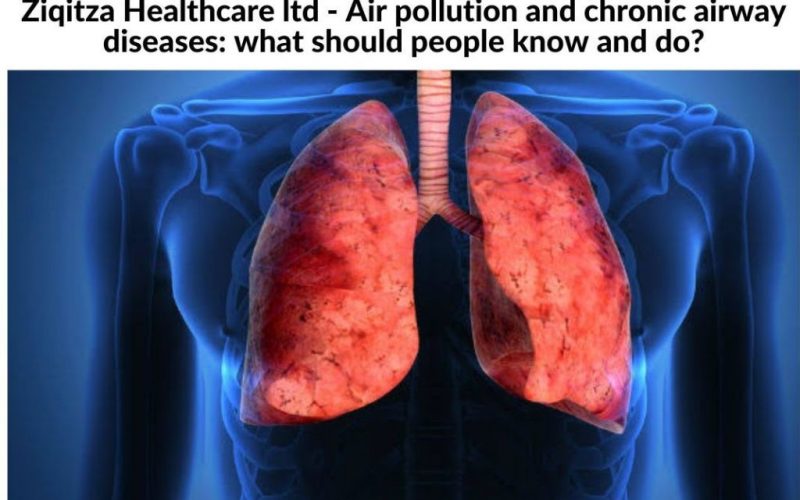The consequences of air pollution on human health continue to be a global issue. The impacts of air pollution exposure on human health are numerous and grave. Ziqitza Healthcare ltd says that globally, the combined impacts of household and ambient air pollution were responsible for seven million fatalities. People who have chronic respiratory conditions like asthma and chronic obstructive pulmonary disease (COPD) are particularly susceptible to the negative effects of air pollution.
Ziqitza Healthcare explains that a number of different systems and organs are impacted by air pollution, which has both immediate and long-term consequences on respiratory health. Air pollution can cause asthma and COPD, as well as increase respiratory morbidity and mortality rates. Pollutant components and sources vary depending on country, season, and time, affecting the health effects of air pollution. In developing nations, burning solid fuels is a significant source of air pollution. Ziqitza elaborates that different regions of the respiratory tract are impacted by air pollutants such as nitrogen oxides, ozone, sulphur dioxide, carbon monoxide, and particulate matter via a number of pathways, resulting in respiratory symptoms.
Everyone is impacted by air quality, but some people are more vulnerable than others. Children and older adults, people with pre-existing cardiovascular or respiratory conditions, and people with genetic polymorphisms are more at risk of experiencing the negative health impacts of air pollution. When our body’s defence mechanisms are compromised, this may become worse.
WHICH ARE THE EFFECTS OF AIR POLLUTION ON RESPIRATORY HEALTH?
According to Ziqitza Rajasthan, the impacts of respiratory health conditions vary from small upper respiratory irritation to lung cancer, chronic respiratory and heart illness, and acute respiratory infections. Air pollution can also exacerbate pre-existing heart and lung conditions. Reduced life expectancy and premature mortality have been associated with both short- and long-term exposures.
Particulate matter, ozone, nitrogen dioxide, sulphur dioxide, and carbon monoxide are the pollutants with the strongest evidence of having harmful impacts on respiratory health. Ziqitza Limited cites that particulate matter is categorised according to particle size and used as a measure of air pollution. PM10-2.5 refers to coarse particulate matter, which has an aerodynamic diameter of between 10 m and 2.5 m. PM2.5, often known as fine particulate matter, can enter the lung deeply and has an aerodynamic diameter of less than 2.5 m.
Short-term effects of Air Pollution
Some of the minor symptoms of air pollution are listen below:
- Irritation in the throat, nose, eyes and skin
- Chronic cough
- Wheezing
- Headaches
- Dizziness
- Nausea
- Sore Throat
- Chest Pain
- Chronic Mucus
Long-term effects of Air Pollution
- Weak immune system
- Low reproductive rates
- Birth Defects
- Chronic Obstructive Pulmonary Disease
- Heart Disease
- Lung Cancer
- Damages to vital organs such as brain, kidneys, liver and nerves
- Lung disorders like emphysema, asthma, pneumonia, chronic bronchitis
According to ZHL Rajasthan, numerous research studies have demonstrated that indoor air pollution levels are higher than outdoor levels. For instance, using biomass fuels for indoor cooking results in smoke that triggers acute respiratory illnesses. The easiest method to maintain clean air around us is to follow some simple rules, such as using the exhaust fan in the kitchen when cooking, avoiding smoking indoors, not using room fresheners regularly because their chemicals can be detrimental to the lungs, etc.
Ziqitza Limited Rajasthan explains that outdoor air pollution, which is a complex mixture of several contaminants, has a significant influence in many areas due to factors like household heating, transportation, agricultural emissions, manufacturing, and chemical use. It has long been known to be a source of pain due to the odours, dust, and smoke it produces. Avoid visiting polluted areas such as industrial areas, construction sites, waste disposal areas, and so on. Each of these areas emits a different type of hazardous gas that is harmful to the human system. If you have a breathing problem, avoid visiting or being near these areas.
It is up to you to live a healthy and risk-free life. Your actions and decisions have an impact on your future. Avoid things and environments that put you at risk of developing chronic illnesses. Keep the preceding!


